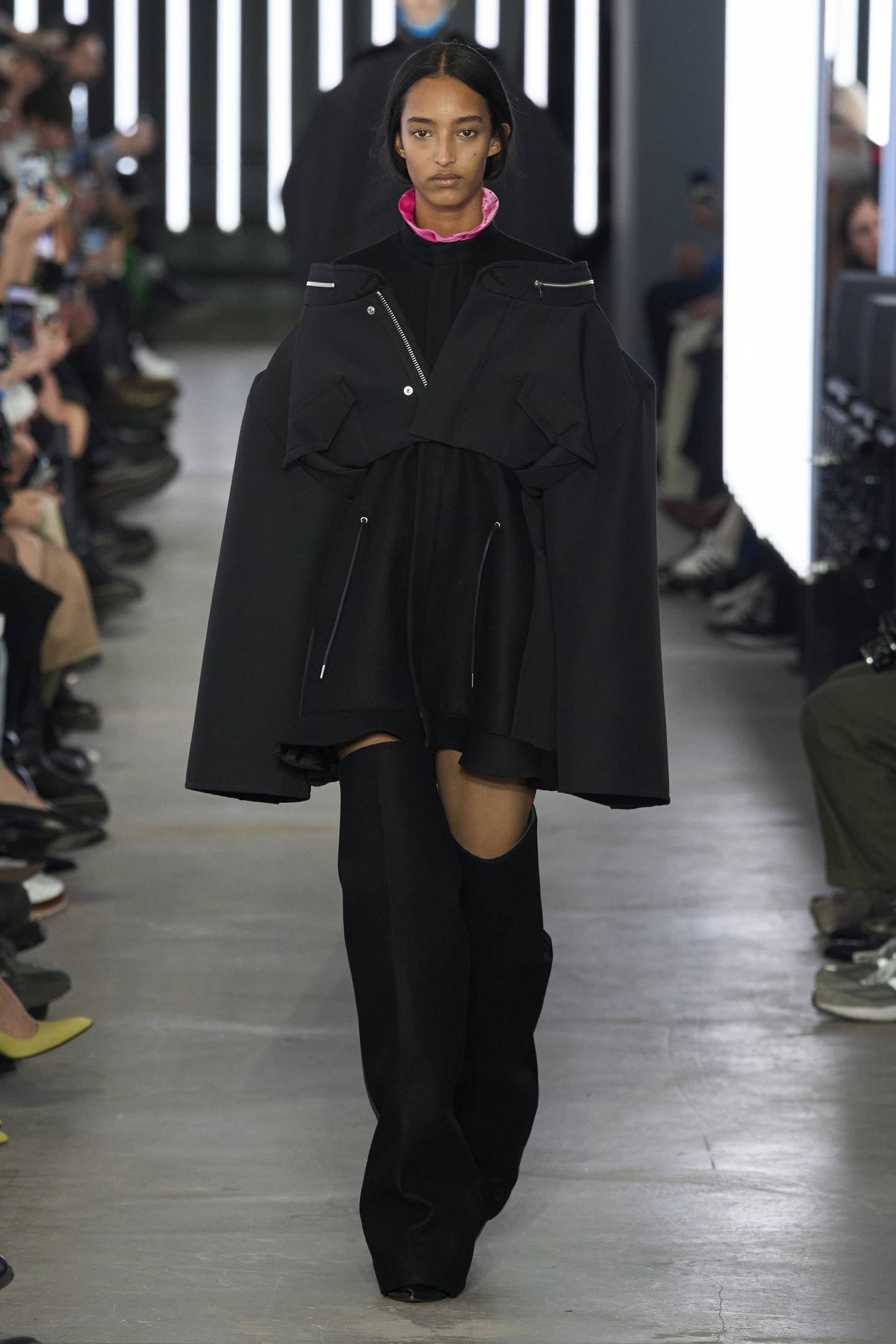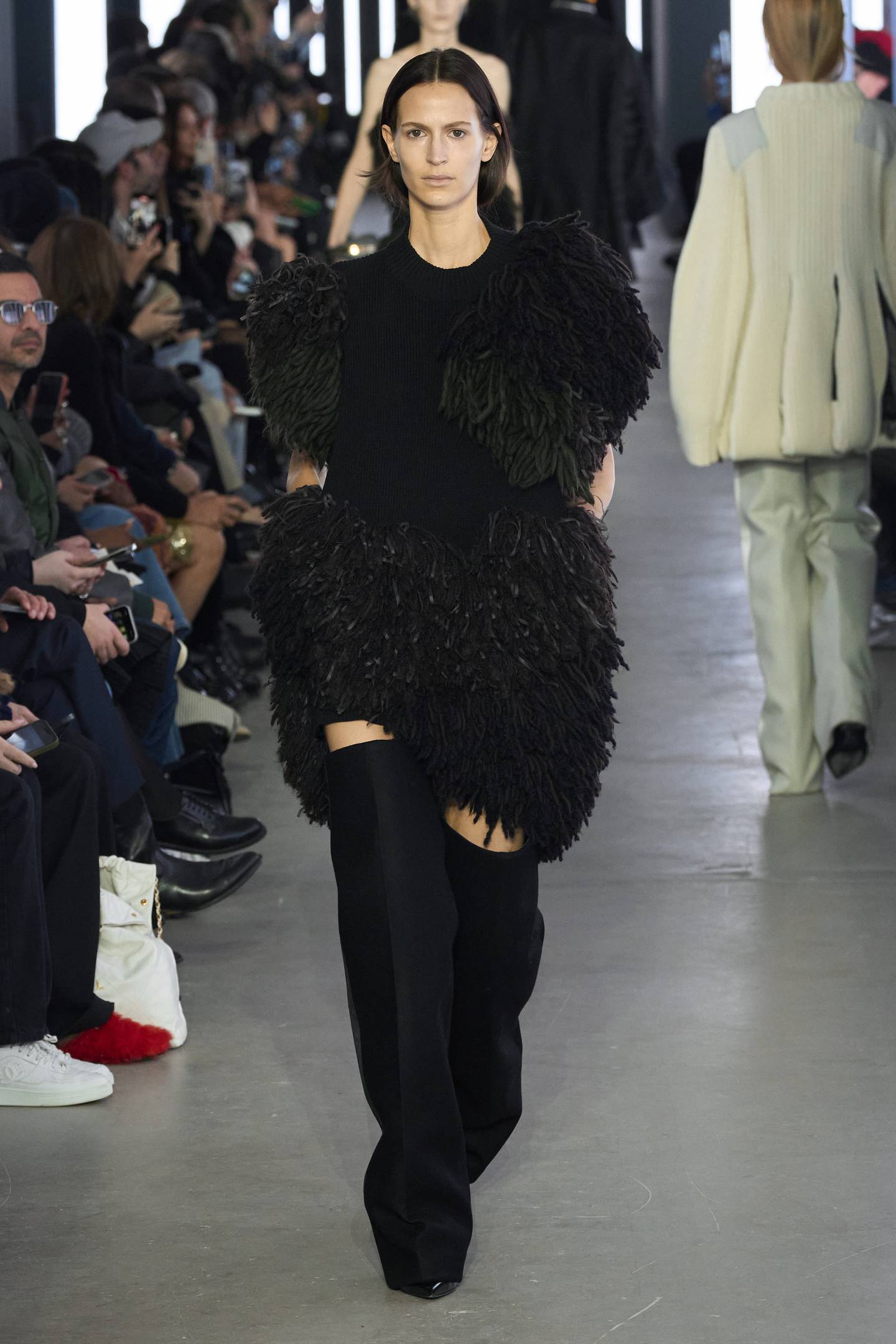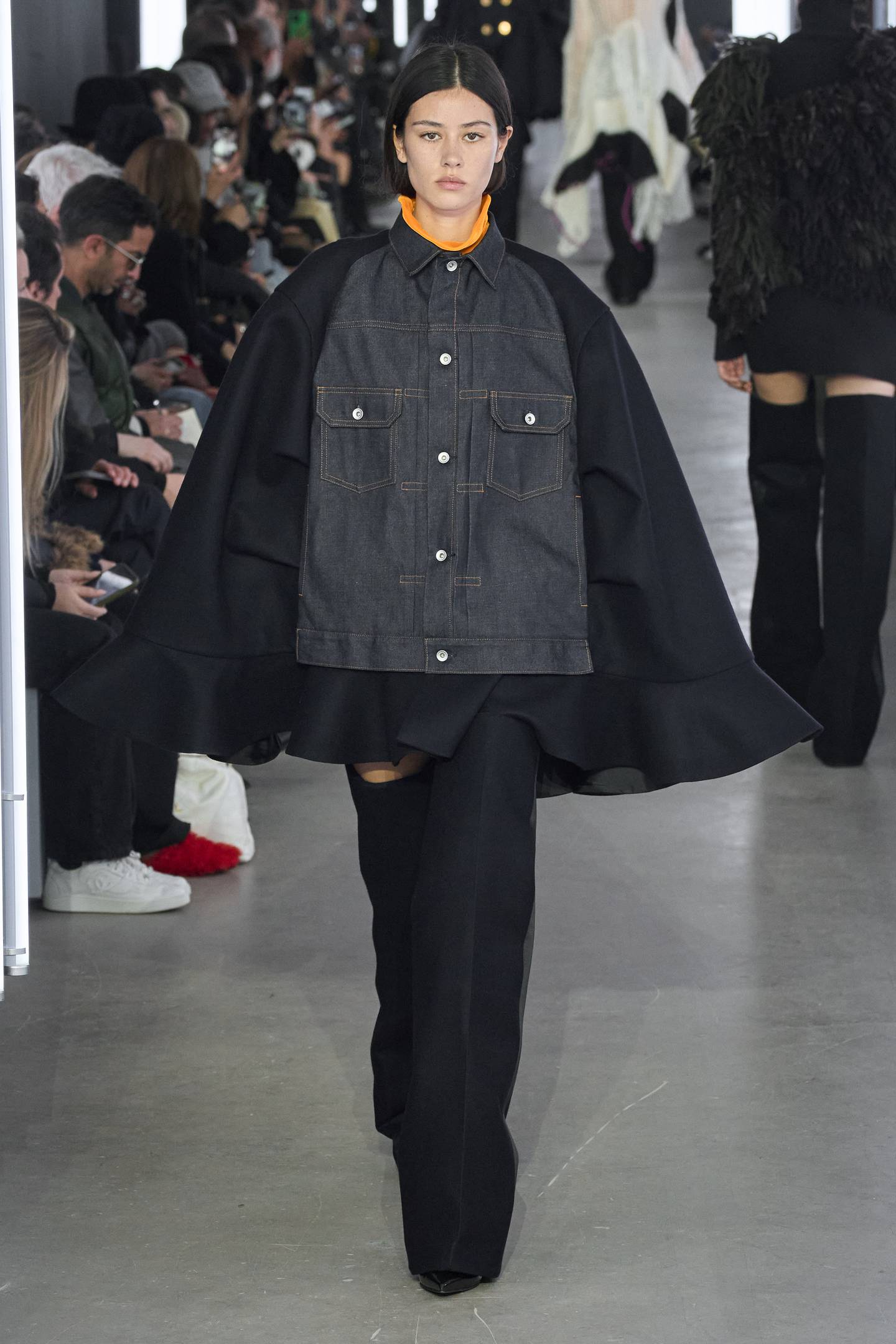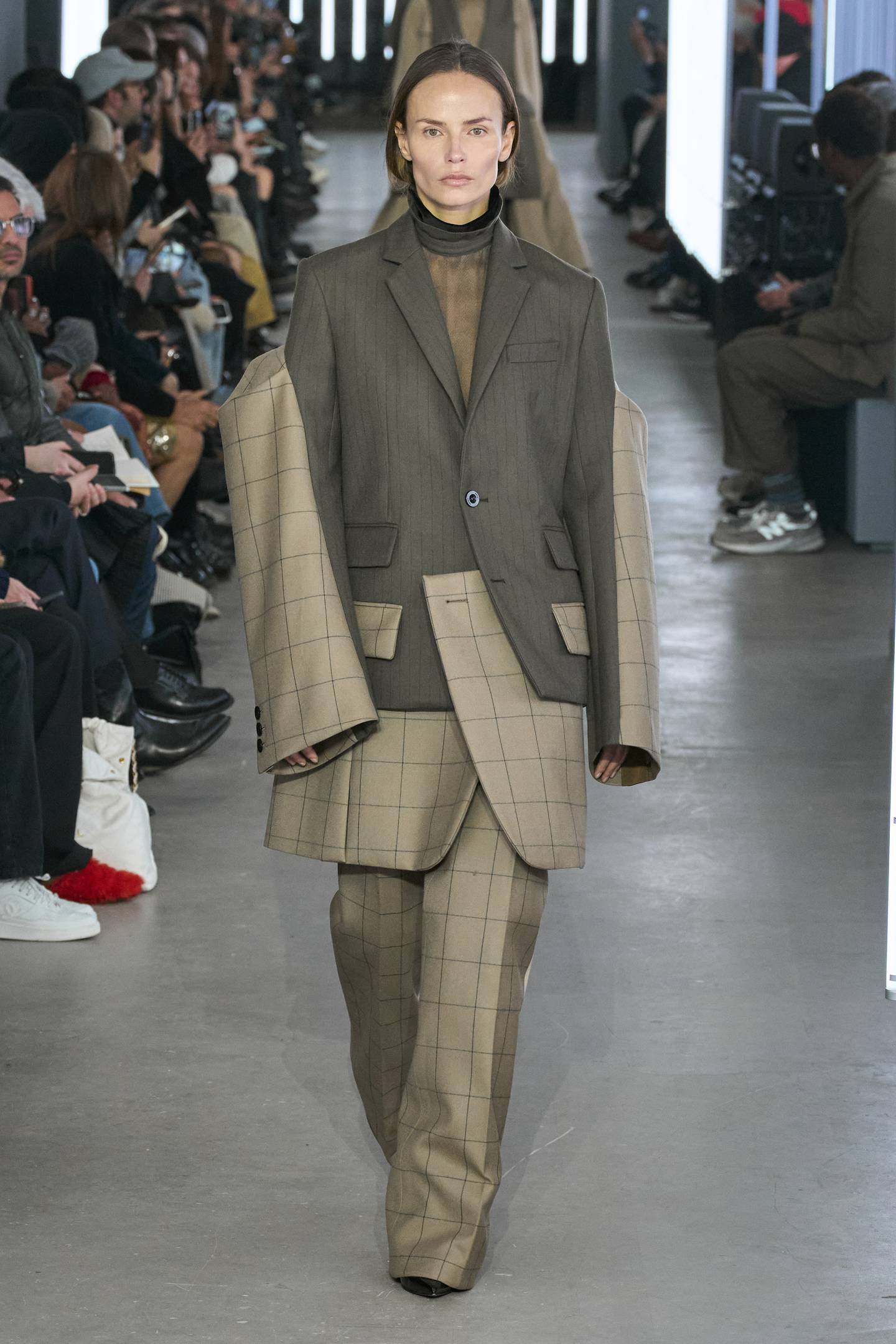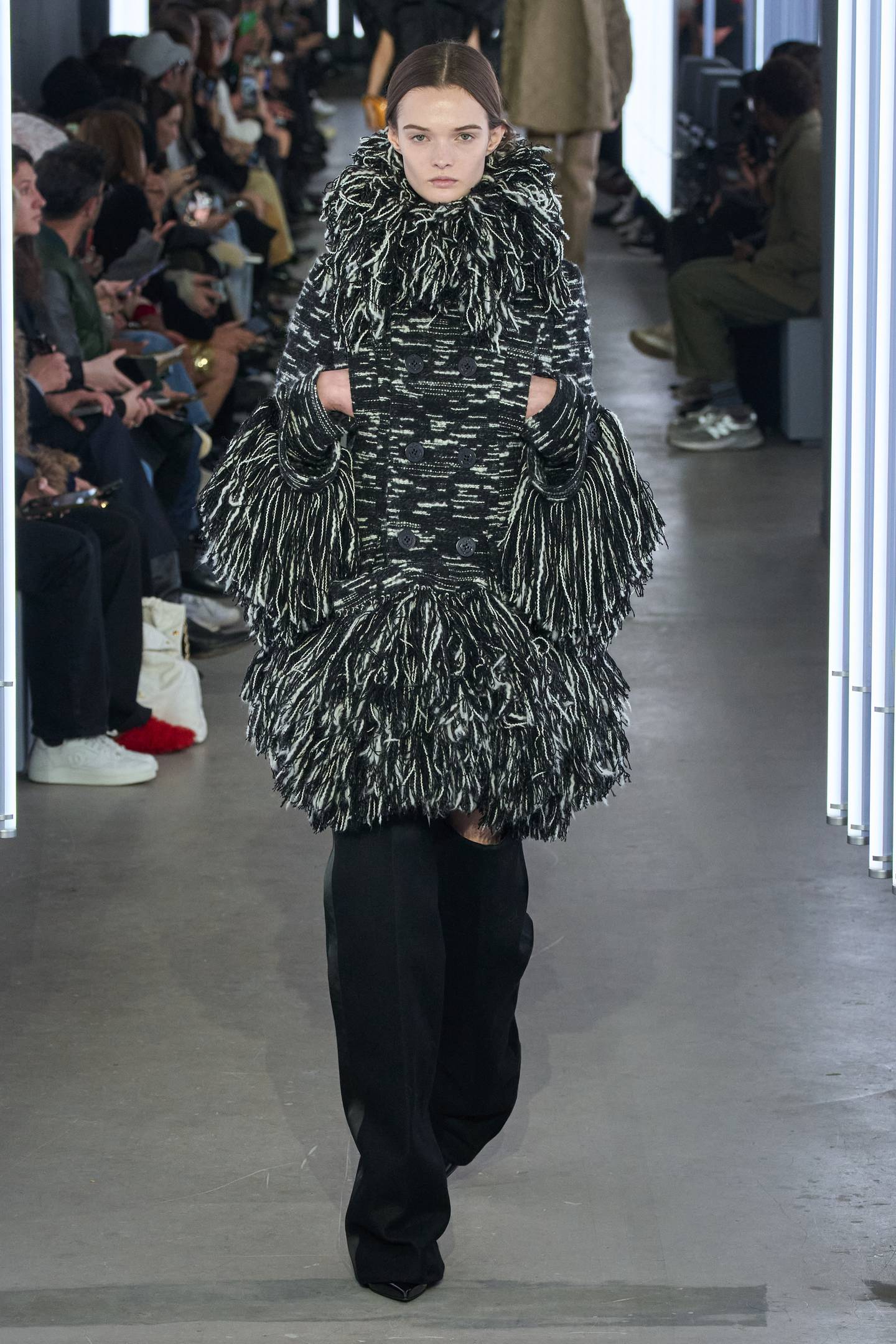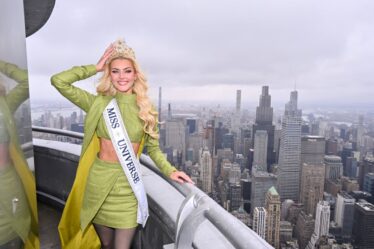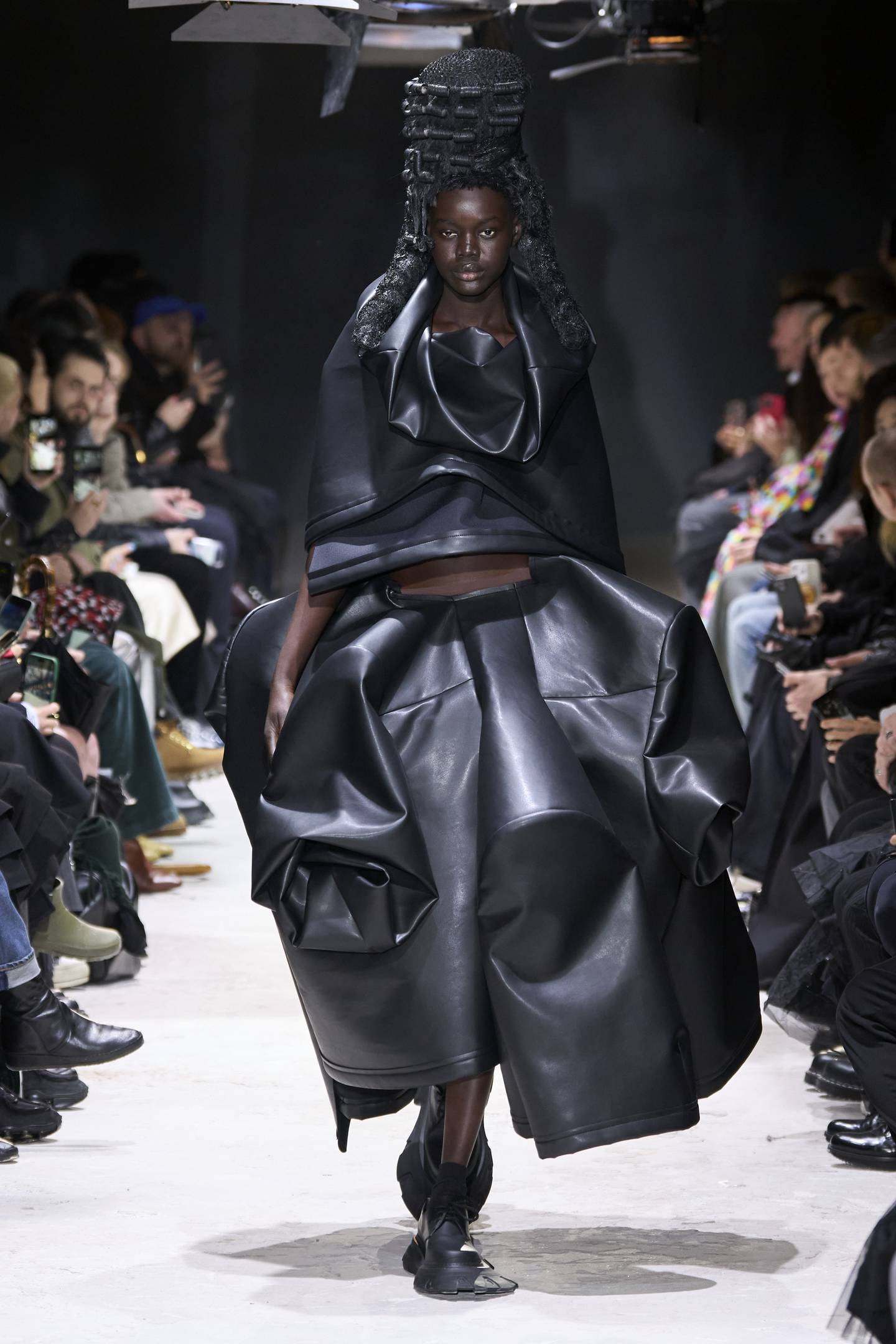
PARIS — ANGER
This collection is about my present state of mind.
I have anger against everything in the world,
especially against myself.
There must be millions of people around the world who share Rei Kawakubo’s sentiments, who feel rage at the injustice, the inhumanity and the suffering we are seeing in real time, but who are also infuriated by their inability to do anything about it. There is, however, only one Rei, and she was able to embody her fury and frustration in the Comme des Garçons collection she showed on Saturday. The soundtrack was two Beethoven piano sonatas, masterpieces composed by a man also confronted by his own limitations. They built to a furious crescendo.
Truth to tell, the clothes followed the blueprint she established years ago. Her massive, sculpted post-clothes claimed their usual space, but this time it felt like the specificity of her opening gambit curbed the abstraction. I saw “Poor Things,” a clash of cultures, punk spikes and Regency ringlets in Takeo Arai’s hairstyles, elaborate codes of court dress disrupted by eruptions of polyeruthane, a cape of huge roses splashed with viscous black oil, the ruin of nature’s beauty. An angry woman knows no restraints.
The collection was unusually explicit in its use of graphics: chains and barbed wire to counter the flowers and bows. And the presentation’s body language was equally forthright. The first model stopped, stamped her foot, crunched her face in disgust. Another hesitated. Could she – should she – go on? A woman bowed her head. Sorrow? Despair? The next marched forward determinedly, then paused to confront the audience, pushing in close to the front row. Second to last was a woman who seemed weighed by her dress. She stopped, hiked it up, persevered. All 16 models were dressed in black. But then came one in white, Japan’s colour of mourning. In the end, it was as though the collection existed in some liminal state between life and death. Human “civilisation” feels similarly poised.
Saturday during Paris Fashion Week is traditionally the day for Kawakubo and her acolytes.
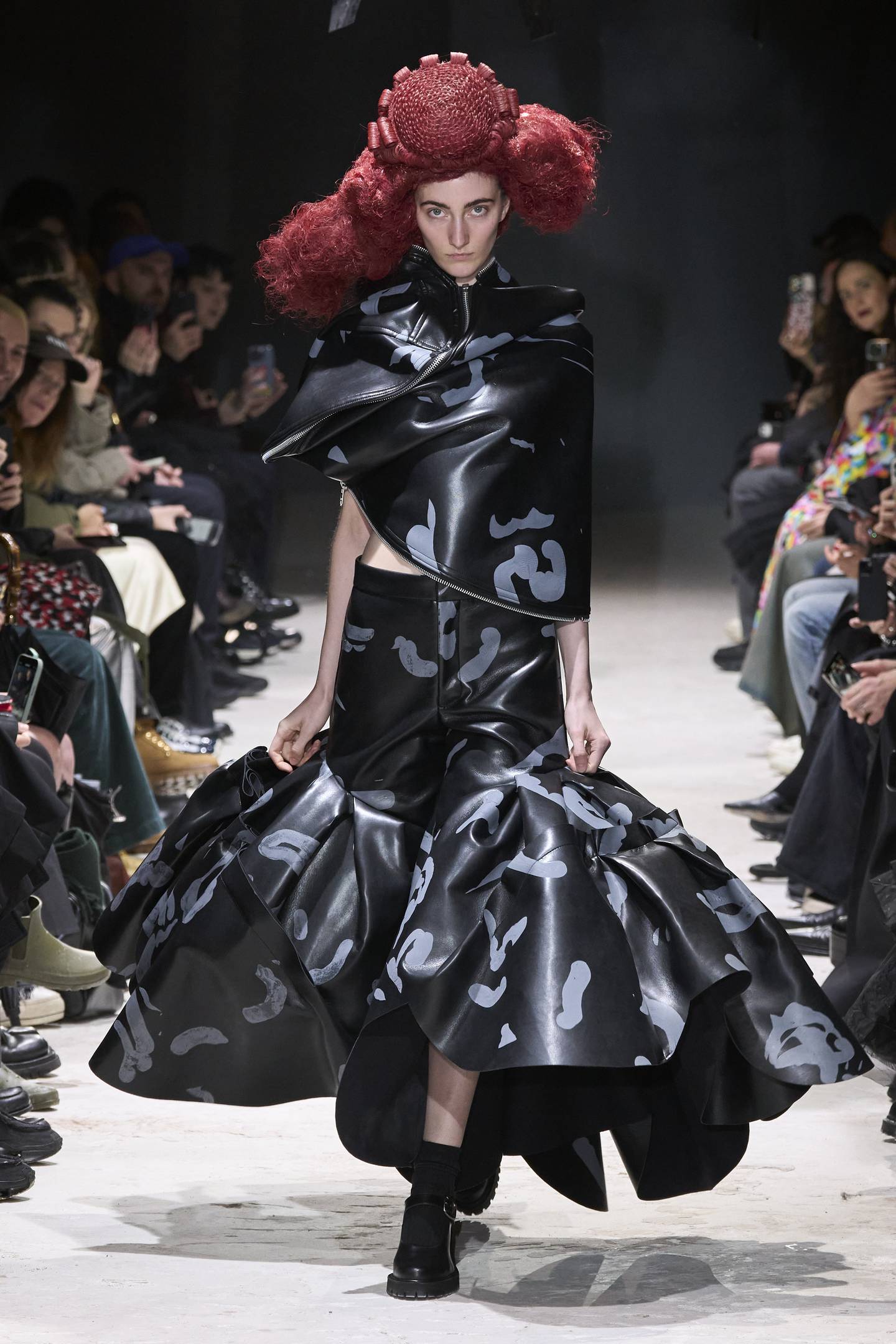
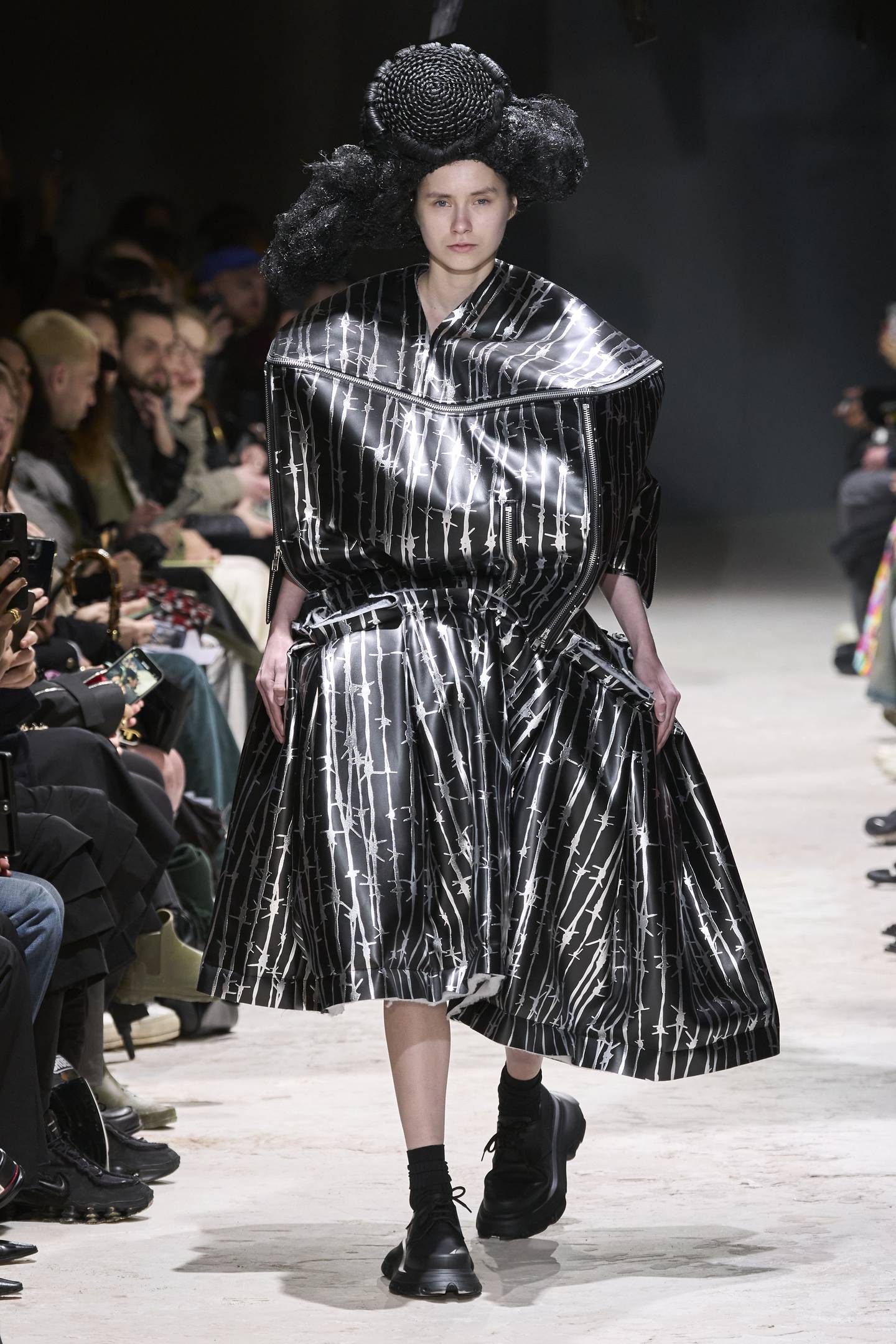
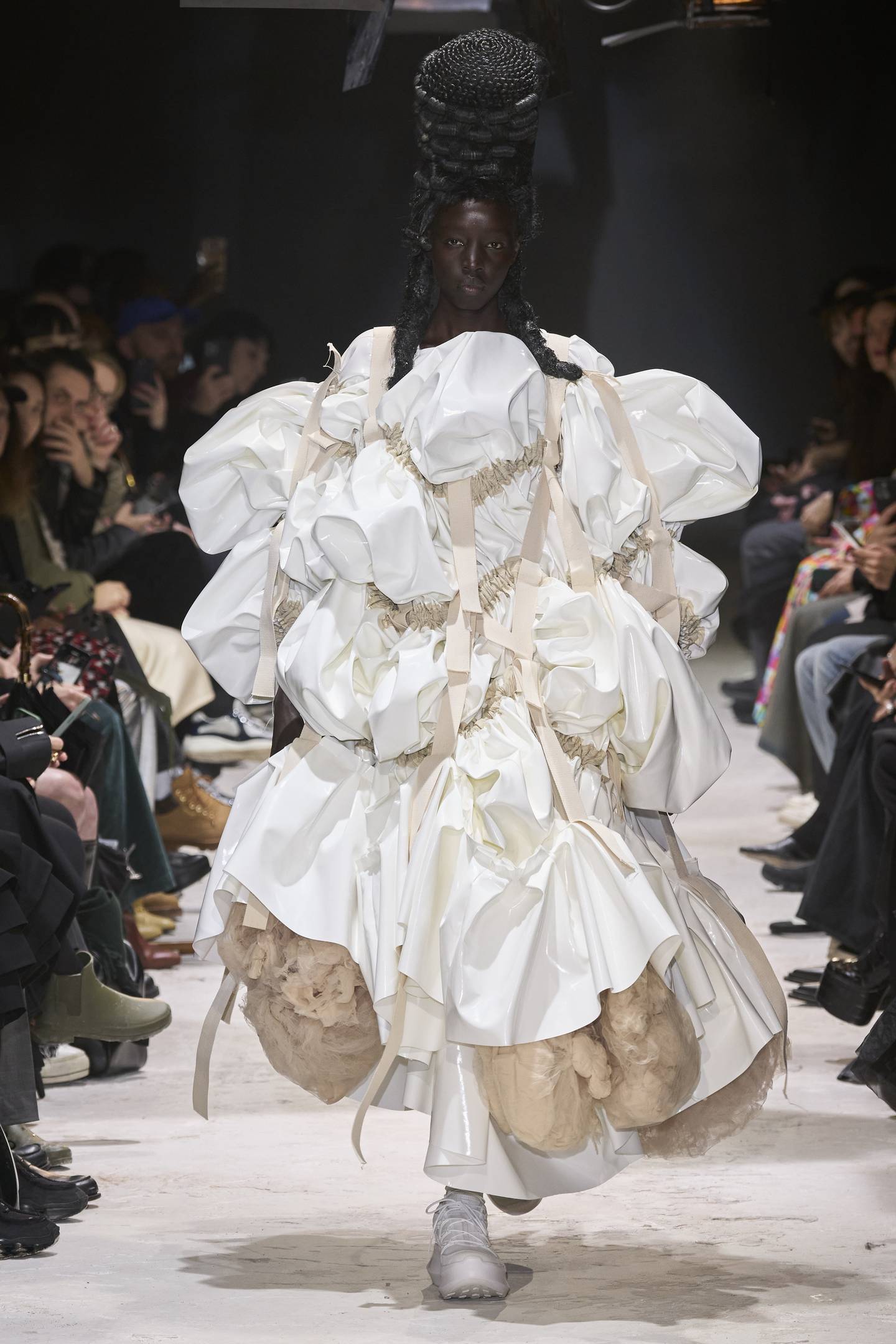
Junya Watanabe is a personal favourite. In keeping with the Rei tradition, there was a cryptic statement that brooked no post show elaboration. Here was Junya’s: “I want to express the beauty of the contrast between clothes and sculptures.” Obviously, you have a hard or soft option. Pushed on that point, Junya conceded. Human vs. inhuman. The collection made more sense. Soft human forms collided with hard geometric forms. “Don’t come close,” those forms said. “You can’t touch me.” Fiercely defensive. Even when they softened into Frank Gehry swoops, they were still formidably distancing.
But, as the soundtrack edged from keyboard busyness into Erik Satie lyricism, the coils and spirals and pointiness yielded to floral underpinnings and a more comprehensible framework of trenchcoat and biker jacket extemporised into polyhedrons that encased the body. Finally, there were TRON-like articulations, emphasising shoulders and hips over Junya’s immaculate tailoring.
If Rei’s collection was fuelled by anger, Junya’s seemed more motivated by curiosity. In a face-off between human and machine, which form triumphs? Or is it the synthesis that is most convincing? In a season where there has been a strong undercurrent of sci-fi with its off-world possibilities, the question seemed relevant, even if Junya offered no clear answer. Which was possibly a relief.
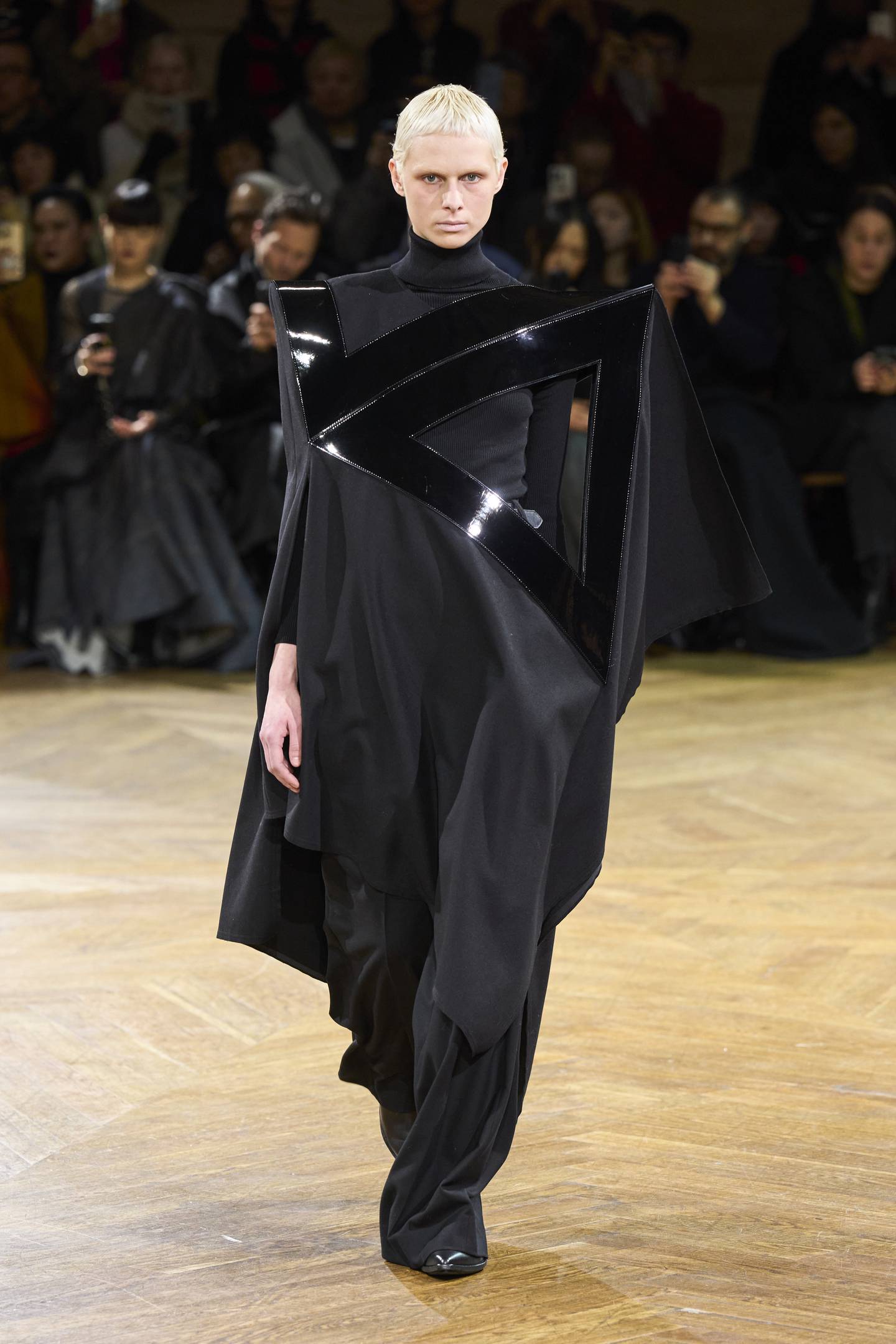
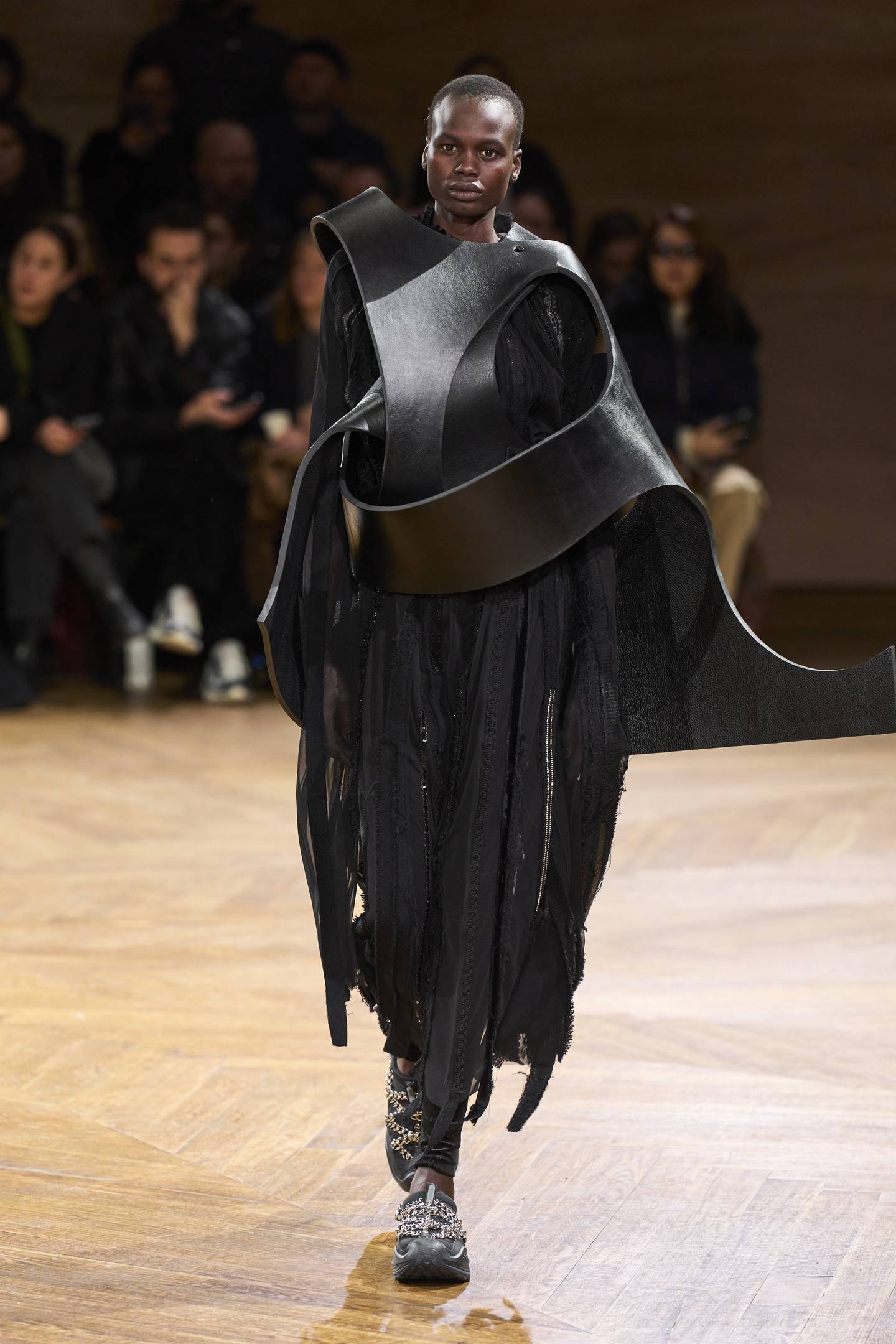
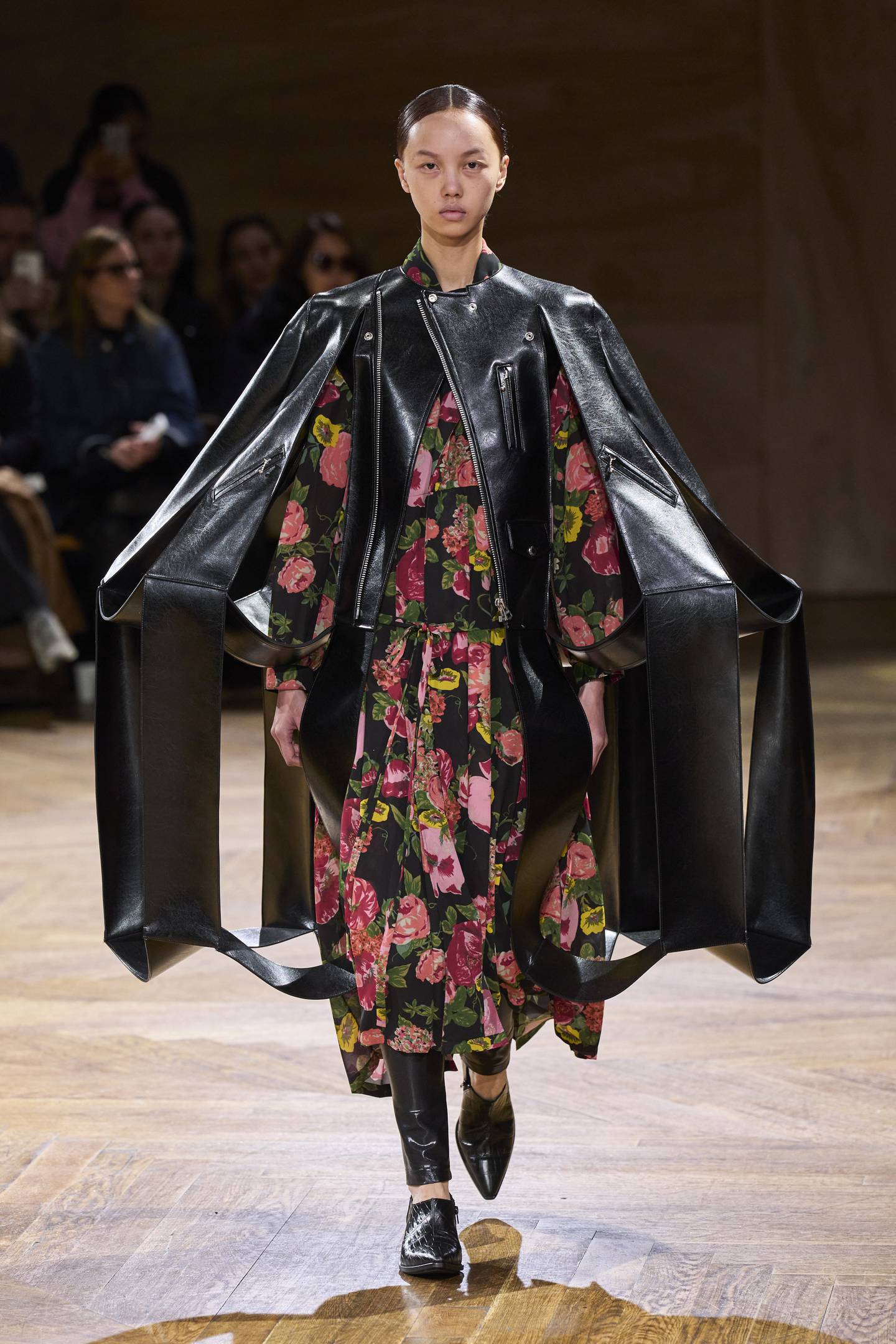
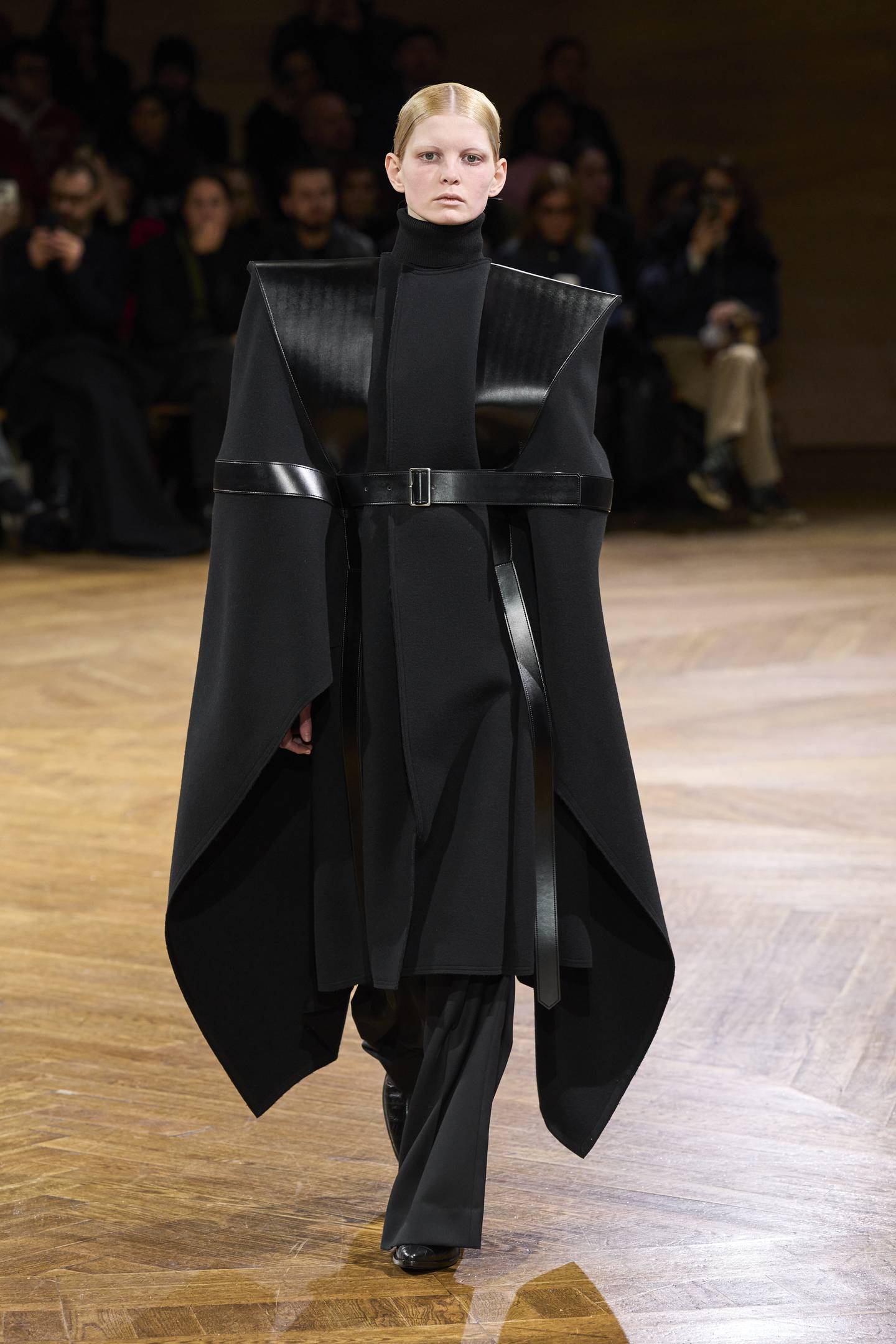
Kei Ninomiya has been working off-world for a while now, each of his collections for Noir delving further and further into the multiverse. For next season, it felt like he returned to planet Earth, with a resolution to repurpose the detritus of human civilisation. So you could say his motivation was ingenuity. It transfigured the broken bits and pieces that came together to shape his designs: the cyberpunk cobweb of coloured wires, the harness made of slinkies or cubes of coloured plastic, the safety-pinned brocade, the teacup headpiece, the packing blanket skirt. Ninomiya conjured a balletic beauty from plastic popsicles. All of it was too light and charming to be Wall-E post-apocalyptic, with Hasegawa Hakushi’s soundtrack of cartoon splat and kerplunk and a voice gamely calling out outfit numbers like a couture show (which seemed appropriate given that many of the outfits looked so complex you could only imagine them as one-offs).
Still, Ninomiya’s ingenuity was so surpassing that it did seem that he was creating a monument to a lost civilisation. The gorgeous closing section featured outfits composed of shimmering metallic discs, changing colour as they moved, like a memory of flowers. But I was particularly taken by an earlier look, the thick orange and black strands of something tubular crocheted into a pineapple shape, with the head of the model topped with a tuft of hair like the crown of the fruit. If this is how the remnants of humanity choose to remember – nay, worship – the lost pineapple, I hope I’m there to join the celebration.
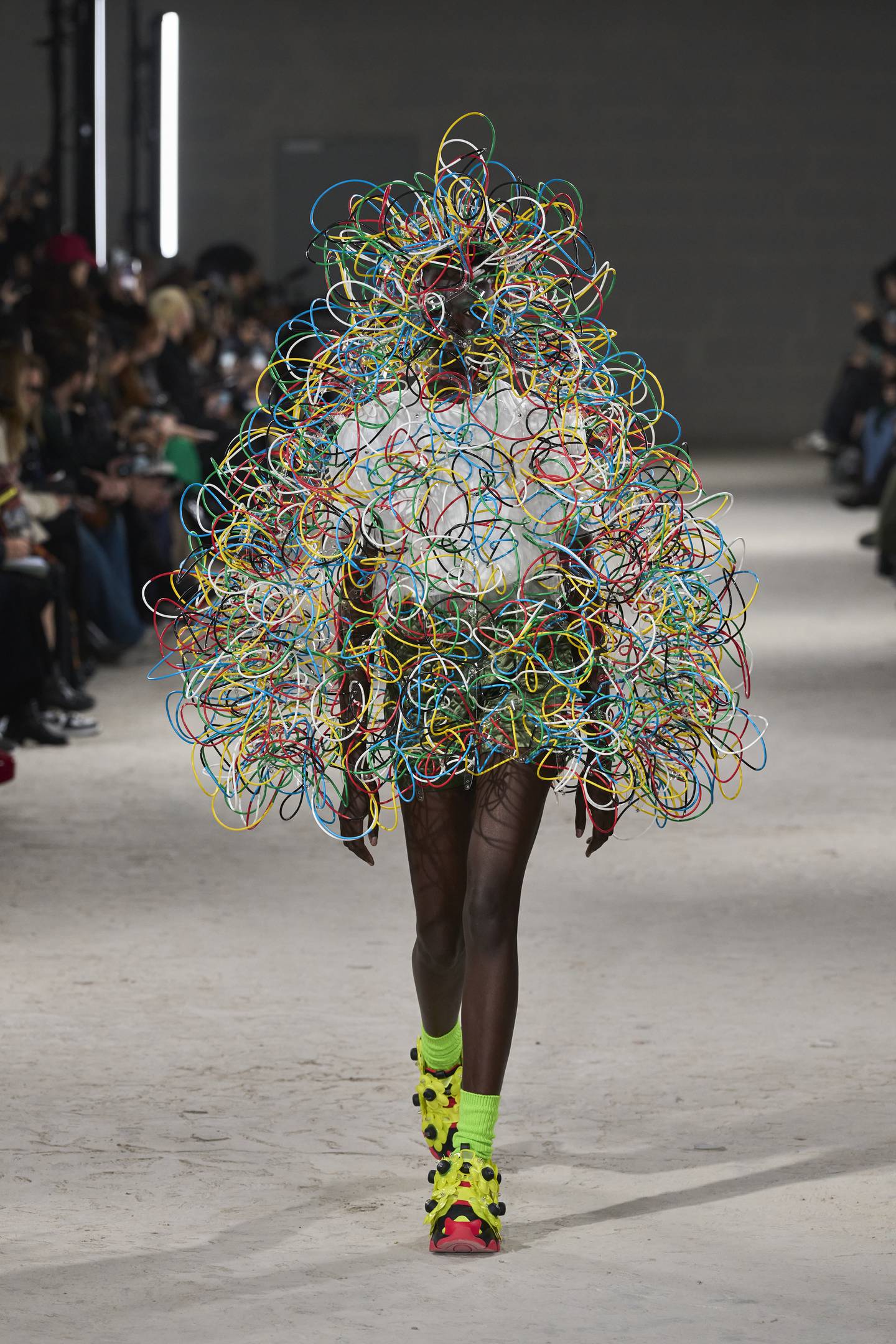

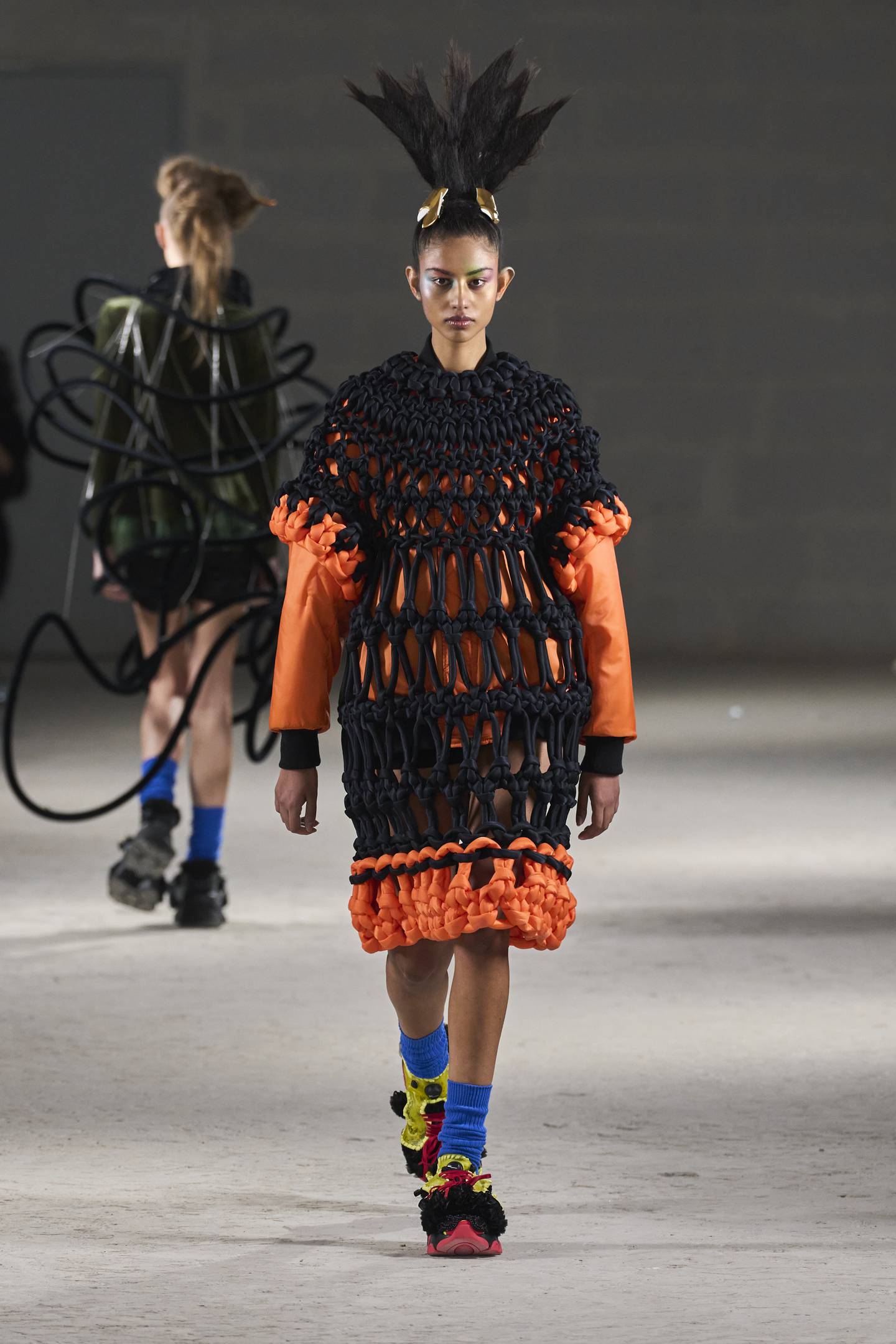
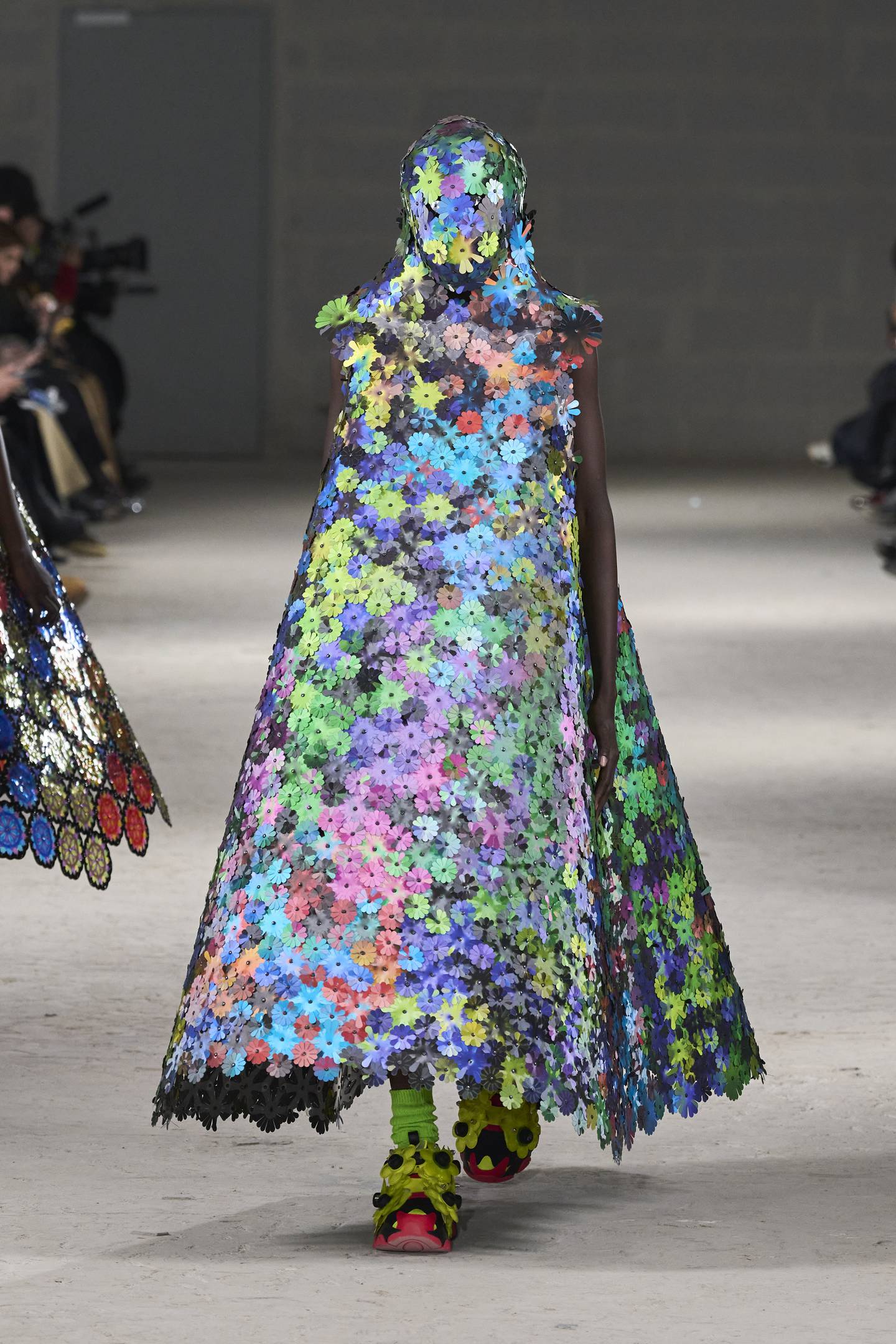
The one Comme alum who has escaped the Saturday slot is Chitose Abe, who showed her new Sacai collection on Monday. For 25 years, she has been breeding fashion hybrids, so long, in fact, that you no longer feel the shock of the new in what she does. And yet there is something durably fascinating about Abe’s designs, and it was in full effect on Monday. For a start, everything she showed, however layered it looked, was one piece. The entire dress/jacket/coat construct? One piece. Everything was paired with a pant boot (a boot pant?), and with that, Abe created a forceful new silhouette, with an abbreviated top meeting the boot mid-thigh. But the drama came, unsurprisingly, from the cape shapes, lending a swinging, aerodynamic movement to jackets. Abe’s knitwear also injected newness into her fashion vocabulary. She said she wanted something that suggested flowers, and the huge blossoms of fringe on key pieces were an abstract expression of that.
It was Abe’s strongest collection for a while, more proof, if it was needed, that hybrid forms shape the future.
